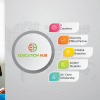How do you teach Gen Z?

My day job involves teaching students at a university, dealing mostly with the 18-24 age group. These students fall under the Gen Z category, who are the first true digital native generation. They were born after the rise of the internet and cable television. They have no memory of life before smartphones, and most of them have overwhelming access to social media and streaming content.
Their ability to interact with each other via the internet is much more intricate than that of our generation (Gen X), who grew up in the 1970s. Our midlife crisis is evident in our vain efforts to copy the Millennials (Gen Y, born between the early 1980s and the mid-1990s) as we join the bandwagons of social media. In our desperate attempts to be liked, we willingly ignore the fact that the internet can spy on us while posting very personal issues on social media. In contrast, the new generation is much more in control of their digital avatars. They use Snapchat or Whisper to keep their audiences limited or use protective measures to make messages disappear after viewing.
In order for my generation to teach this new generation, i.e. to transfer knowledge, we need to first address this intergenerational elephant in the room: our students will be using technology to negotiate their learning materials. This realisation was confirmed during the pandemic. The policy-level intervention forced many teachers to adopt technology for the first time. We were forced to use online teaching platforms and get used to terms like hybrid, blended, and in-person teaching. After the pandemic, we continued to incorporate technology wherever possible, but with a grain of salt.
Not choosing technology is not an option; it is a necessity. The challenges for teachers are: to maintain their required teaching standards in handling the upsurge of technological advancements; to strike a balance between the heavy workload and new technological developments; and to mitigate the AI-phobia that machines will replace humans.
The digital pedagogy proved to be a proverbial enactment of Tom and Jerry. Teachers are busy "turning it in." Even the president of Harvard had to step down as she failed to give credit to some paraphrased lines. There is no way to hide digital footprints. Any bolt from the online cloud can strike if you misbehave. Prof Claudine Gay failed to stop the pro-Palestine crowd on her campus. Soon after, she was accused of plagiarism and removed. We, as professional scholars, are trained to avoid plagiarism by properly crediting the sources we use in our critical communications. Our shortages or failures give our students a mixed signal.
Our students live a fast-paced life. Many of them are multitaskers who prefer shortcuts to success. The rise of generative AI has boosted them on a learning curve that is way beyond their teachers' resources. These tools appeal to the students, who are already deft in hiding their sources. The battle between the plagiarism checker and the hiding of AI-generated codes has ensued in a cat-and-mouse chase. As teachers, we read through our students' writings, looking for not only copied and pasted materials but also bots.
Whether we love or hate technology is beside the point; we have to live with it. The academic response to generative AI has been three-pronged. The first group heightened the defensive shield to ban AI altogether. Many Western universities have gone back to in-class invigilated exams, minimising assignments or take-home exams. The second group is installing protective measures to avoid AI. The third group is exploring new ways to embrace technology to aid students' knowledge and skill sets. In a Ted Talk, Dr Phillipa Hardman termed these three groups as Team Ban, Team Avoid, and Team Embrace. She thinks that the first two teams will have to give in to the ongoing AI revolution.
How do we prepare for this eventuality? The simple answer is: we need to educate the educators. The push to integrate new technology has come from our target audience, i.e. students. As digital natives, their access to online resources is not only far-reaching but also collaborative. They don't simply consume information—they create their own learning groups and information networks.
These networks also act as influencers, determining which degrees are employable and useful. They discourage pursuing degrees solely out of passion. They don't see any point in paying for degrees that will simply satisfy their passion, as different online modules and free lectures can give them in-depth ideas about such disciplines. The rise of STEM and entrepreneurship has reduced the scope of teaching many subjects in the humanities and social sciences.
The bottom line is that, as educators, we need to upgrade ourselves to be in sync with the digital ecosystem. Education is dialogic communication where teachers and students engage with learning materials to discover them through a mutually enriching exchange. In my field of literature, my job is to turn the classroom into a platform for communication and artistic expression through the texts that I teach. For the technology to be effective and meaningful, I need to go beyond explaining the textual nuances and turn all kinds of media into integral parts of the educational process. This requires a redesign of the syllabus with a variety of learning approaches, and enable the students to produce legitimate works that they have thought on their own, but maybe used technology to attain them. The text can be transferred to different digital content that involves critical thinking and creativity. Assignments can include community engagement activities, group activities, online platforms, and other learning strategies to make students reinterpret texts.
Not choosing technology is not an option; it is a necessity. The challenges for teachers are: to maintain their required teaching standards in handling the upsurge of technological advancements; to strike a balance between the heavy workload and new technological developments; and to mitigate the AI-phobia that machines will replace humans.
What is required is a complete overhaul of higher education to meet the expectations of this new generation of students. Arizona State University has already partnered with OpenAI to develop models to marry higher education with AI. Harvard's education department has come up with a senior leadership collaborative platform like Perusuall to reorient the teachers.
However, we need to find an indigenous solution to this problem that takes the local conditions into consideration. We have already seen the danger of standardisation in the name of ranking and accreditation, which has led us to the trap of the higher education police of Global North, and subjected us to an asymmetrical power structure relegating our position. Unless we reassess our needs, we will fall prey to the tech giants, who will slowly make us inferior, if not redundant. To teach Gen Z, we need to up our game.
Dr Shamsad Mortuza is professor of English at Dhaka University.
Views expressed in this article are the author's own.
Follow The Daily Star Opinion on Facebook for the latest opinions, commentaries and analyses by experts and professionals. To contribute your article or letter to The Daily Star Opinion, see our guidelines for submission.

 For all latest news, follow The Daily Star's Google News channel.
For all latest news, follow The Daily Star's Google News channel. 










Comments